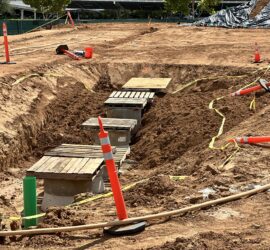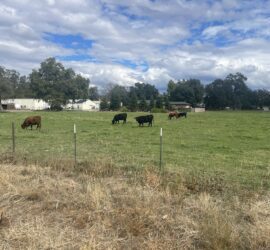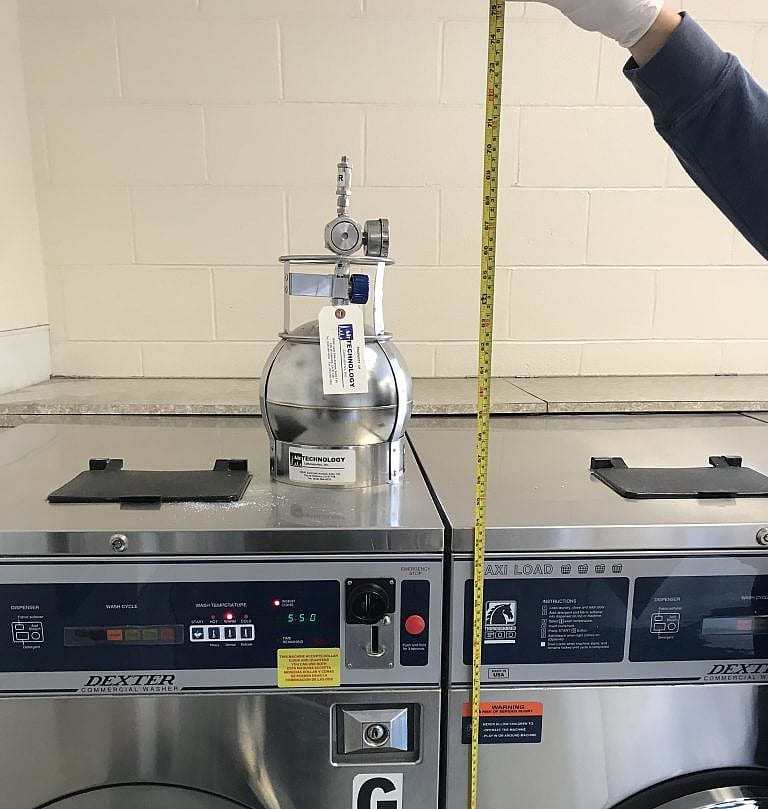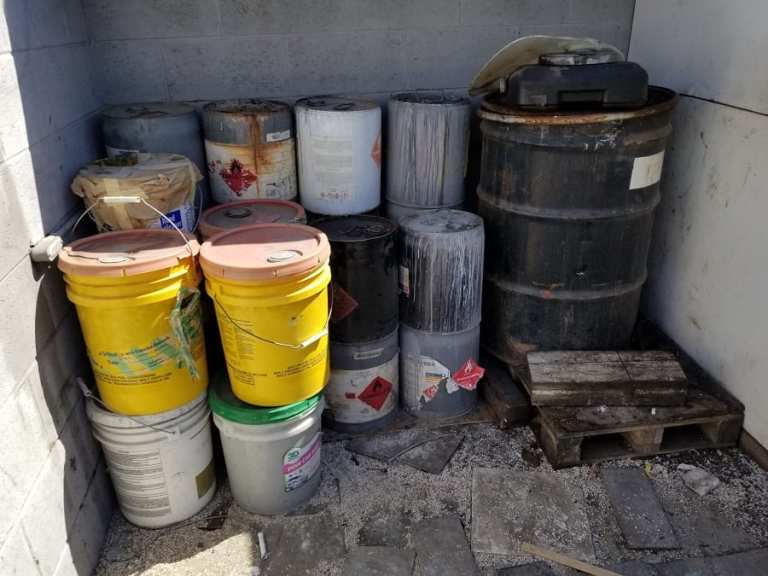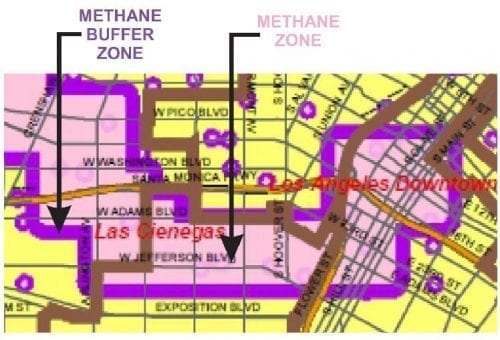Remediation after Phase 2 Environmental Site Assessment
Contamination Remediation refers to the process of cleaning up a property with contamination issues that are usually discovered during the Phase 1 Environmental Site Assessment (ESA) and Phase 2 Subsurface Investigation process. Today, there are a variety of remediation methods and technologies to apply at a site. And environmental professionals can optimize the process for maximum effect and the lowest cost. For instance, the type of chemical, or the extent of the contamination plays a major role in selecting the optimal remediation technique. Moreover, the type of media (for example- soil, soil gas and/or groundwater) is another important factor in the remedial action methodology. Lastly, the available timeframe and budget, as well as the extent of regulatory oversight for the contamination cleanup process, also play a part in the formation of a remedial action plan. Updated April 10, 2024.
Altogether, one must understand that each site is unique, and it is necessary to consult a professional geologist or environmental engineer to determine the appropriate course of action.
Prior Investigations
A Phase 1 Environmental Site Assessment looks for Recognized Environmental Conditions, which are “red flags” that warrant subsurface contamination testing. The secondary process of this assessment refers to a Phase 2 Environmental Test, or Phase II ESA, and typically includes soil, soil gas, and groundwater sampling. The samples undergo laboratory analysis for common contaminants, indicating the presence of contamination, or lack thereof. And if contaminants are observable above Phase II ESA Screening Levels, one can reasonably presume requirements for remediation and mitigation actions. However, a Phase II ESA will rarely comprise enough data to begin the cleanup process.
Additional Investigations
In essence, all Phase 2 Environmental Site Assessments are “limited” investigations because they are made affordable. Thus, Phase II ESA reports are typically shallow subsurface tests and don’t fully delineate the lateral and vertical extent of a contamination plume. Usually, if contamination above screening levels are observable, one or more Additional Subsurface Investigations will become the next phase requirement. This effort aims to produce data for the clean-up process and comprises deeper samples than the initial Phase II ESA. It is in order to create an accurate representation of the contamination plume. Judging by the final results of this site contamination model, engineers and geologists then prepare the best course of action with regards to cleanup, also known as a Remedial Action Plan.
Contamination Remediation Action Plan (RAP)
After enough information is gathered by the Additional Subsurface Investigation process, professional geologists then decide how to go about cleaning up the site. The goal of remediation is to restore the subsurface as close to the natural state as possible, and also to reduce human and wildlife exposure to harmful contaminants. There are many ways to remediate a site with subsurface contamination. However, the processes are often grouped into a few general categories. For instance, if the remediation technology applies directly to the subsurface, without removing any soil or groundwater, it is “in-situ” or in-place treatment. On the other hand, if the soil is excavated, or groundwater pumped, in order to bring the media to treatment, it is called “ex-situ.” Alternatively, natural attenuation is the process by which a subsurface contamination plume dilutes and degrades on its own over time, and is verified by monitoring and periodic confirmation sampling.
Mitigation vs Remediation
Sometimes environmental engineers can reduce human exposure and health risks by implementing walls, barriers, or caps to isolate the contamination plume before it migrates to an end-point. This process isn’t remedial, but rather mitigative. And typically, vapor intrusion mitigation measures occur alongside remedial action methods, to ensure the safety of onsite occupants.
In-Situ Remediation Options
In-situ contamination remediation methods do not require excavations or any pumping of groundwater. For some sites, these methods can be part of an effective, yet energy- and waste-efficient cleanup plan. In-situ treatment always applies directly to the subsurface. The process usually involves adding or injecting an agent to accelerate the breaking down of contaminants. Additionally, these methods can be minimally disruptive to ongoing business operations on-site (depending on logistics).
Chemical Oxidation
In-situ chemical oxidation (ISCO) typically relies on an oxidant to react with and break down contaminants. To illustrate, a common oxidant such as hydrogen peroxide can be strategically injected underground at specific depths and volumes, with the intent to react to contaminants. The result is a chemical and physical change into daughter products which are understandably less harmful, or completely harmless. In the process, technicians introduce the oxidants into the subsurface using existing wells, or new injection points via direct-push drilling. And the oxidant can even be combined with a catalyst, such as iron to speed up the chemical reaction and make the process more efficient.
Chemical Reduction
In-situ chemical reduction (ISCR) is similar to ISCO except for the fact that it utilizes reducing agents (usually a metal such as iron) that can react with other toxic metals (most commonly chromium) to make them less harmful. In fact, ISCR commonly applies to clean up the solvent known as trichloroethene, or TCE. Typically, the process includes injecting the reducing agent directly into holes drilled into the groundwater table. However, another method comprises a technician creating a semi-permeable underground wall made of the reducing agent, to allow the groundwater to be treated as it flows through the barrier.
Thermal Treatment
In contrast to harnessing a chemical reaction for remediation, in-situ thermal treatment uses heat to remove a wide range of chemical contaminants. By injecting steam, applying steel pipe heaters, or using electricity to create heat underground, the chemicals of concern undergo evaporation and degradation. After thermal treatment, the resulting soil gas can controllably migrate to the surface, and undergo further treatment if necessary. Thermal treatment is one of the optimal methodologies to clean up sites with non-aqueous phase liquids (NAPL) contamination
Air Sparging
This technique is technically in-situ but is also a supplement to the soil vapor extraction process, which is an ex-situ process as well. After the injection wells are drilled deep enough to reach groundwater, an air compressor then pumps air into the groundwater table, within the well-casing. This agitating exposure accelerates the volatilization process of chemicals, so they may become vapor-phase, and extract via the SVE system. And after the vapors draw up through the extraction wells, the air undergoes treatment with carbon or thermal applications, prior to atmospheric release.
Bioremediation
Bioremediation utilizes microbial activity to break down contaminants. Harmless bacteria, that occur naturally in the soil and groundwater, can consume and metabolize petroleum products, solvents, and even pesticides. However, the challenge of bioremediation is creating an environment where the select bacteria can thrive. As a result, it may be necessary to add amendments to the soil, such as other bacteria, in order to make sure populations are large enough to consume the contaminants efficiently. Bioremediation is an attractive option because it uses natural microbial action, and can take place in-situ. Alternatively, microbial action can occur ex-situ.
Ex-Situ Contamination Remediation
When there is a large concentration of contamination that must commence quickly, responsible parties may consider ex-situ treatment. Ex-situ remediation methods typically involve a costlier and lengthier scope of work for cleanup. Whether impacts exist in soil, groundwater, or soil gas, the overall concepts comprise removing the contamination from its place underground and undergoing treatment above ground or off-site. For example, extraction and pumping from the subsurface. And depending on the extent of contamination and impact, a combination of these methodologies might be the most optimal approach to cleanup.
Soil Vapor Extraction
Soil vapor extraction (SVE) is an ex-situ treatment that does not involve the addition of any chemicals or reactive agents. Rather it utilizes extraction wells and vacuum pressure to draw out the vapors from chemicals as they volatilize (change into a gas) underground. The extraction wells are typically set within the vadose zone, which is a soil mass generally above groundwater, but below the ground surface. In fact, soil vapor extraction works best with dry soil. And when contamination exists in the saturated soils as well, deeper injection wells may apply to utilize air sparging methods, alongside SVE.
Soil Excavation
Contamination source excavation remediation is an original method of site clean-up. All environmental excavation projects are under the guidance of a site-specific Soil Management Plan. When there is a large concentration of chemicals in a relatively small amount of soil, it makes sense to excavate the site. Using traditional excavation equipment such as backhoes and dozers, contamination is removable from the site. And disposal methods include exportation to treatment facilities with appropriate certification. In fact, sometimes the soil contamination may undergo treatment on-site.
Thermal Desorption
Another ex-situ way to treat soil is by applying heat. To illustrate, heat is applicable at strategic temperatures to volatilize or evaporate the chemicals out of the soil. Typical applications are by flame or by heating elements. Similarly, the in-situ thermal treatment uses subsurface heating elements to volatilize contaminants underground. In fact, large flame application chambers can heat and treat approximately 25 tons of contaminated soil per hour.
Pump and Treat
When groundwater is the target medium of contamination, similar clean-up techniques can be applied. However, a strategic network of wells pumps the groundwater into a holding tank or an on-site treatment apparatus. Afterward, the clean groundwater returns through the system, which results in a pump-back into the same aquifer, or a nearby surface water system. In fact, under the proper permitting protocol, the resulting water may also end up within the local storm drain. A few ex-situ options to treat groundwater in this way include bioremediation, air stripping, and activated carbon treatment.
Activated Carbon
Carbon is a well-known, highly efficient filter media that removes contaminants from air and water. For pump and treat applications, the water is run through an activated carbon filter. It’s here where common contaminants stick or “sorb.” The carbon removes all or most volatiles and hydrocarbons from air and water that passes through. After treatment, the effluent air or water is environmentally friendly for discharge. Eventually, the carbon also needs retreatment by thermal desorption, in order to reuse. Alternatively, the carbon can just be sent to a proper landfill after serving its purpose.
Air Stripping
The air stripping method applies primarily to volatile organic compounds that are dissolved in water. These contaminants typically have a higher capacity for volatilizing by exposure to air and agitation. After the water is pumped into the aeration tank comprising the air stripper, it trickles down through a filter media that exposes the maximum surface area to the air. Simultaneously, a fan circulates air upwards from the bottom of the chamber, and the water passes through as it cascades. In essence, the contaminants volatilize and migrate to the top of the tank in the vapor phase. The resulting vapor can then undergo carbon treatment, per the descriptions above, before exhaustion into the environment.
Containment
In some cases, an acceptable course of action alongside remediation is to simply isolate the contaminants. In fact, by sealing off the source area, one prevents contamination from further migration. This mostly applies to the protection of people and wildlife downgradient from a source-area. There are various containment methods involving vertical and horizontal barriers. For instance, a slurry wall. Although, the most common technique is capping.
Capping
This is a relatively straightforward procedure that involves putting a protective layer above or below a contamination plume. The most basic form of capping exists as a concrete or asphalt layer along the ground surface, with a vapor barrier. For example, these barriers can exist within a subterranean garage foundation overlying contaminated soil. Alternatively, a slurry or clay layer can be applied atop and below a contamination plume in subsurface conditions. For example, landfills install these layers above and below the garbage they place underground. Vapor barriers are technically part of the mitigation effort, which can occur simultaneously with the remediation process. Furthermore, sites with higher contamination concerns might comprise multiple layers, comprising clays and other materials, along with vegetative layering. Ultimately, the goal is to prevent toxic contaminants from migrating into other exposure pathways.
Ecological Revitalization
Ecological revitalization is an over-arching remediation plan that aims to return a contamination site to a more natural state, without the use of human engineering methods. By replanting native wildlife, enriching the soils, and providing wildlife habitat, land managers can provide aesthetic benefits and increase property value at the same time. And, ecological revitalization plays an even greater role, serving a very functional remedial purpose beneath the surface.
Evapotranspiration Covers
Plants can play an important role in remediation and are often the top layer of a capping strategy. In fact, with proper vegetation, the roots of plants draw water out of the ground and circulate it back into the air. The textbook term for this process is “evapotranspiration.” Additionally, it’s important for scientists to select the right soils for this strategy. Planners typically select a fine-grain combination of silt and clay that will be capable of holding high volumes of water. Moreover, it is important to prevent rainwater from percolating down to the level of the contaminants. This is because the chemicals can further percolate downward, into the groundwater. As a result of proper soil and plant selection, absorbent sediments and thirsty roots can help to prevent the water from migrating.
Monitoring Natural Attenuation
Another common method of remediation is Monitoring Natural Attenuation (MNA). Natural attenuation refers to the environmental degradation of contaminants over time. The keyword “monitoring” applies because of the importance of keeping track of the degradation progress. Regulatory agencies typically prefer monitoring to proceed until safer levels of contamination are apparent. Usually, consultants and agencies prefer this method alone, for sites with low-level contamination or where time is not an issue. Otherwise, natural attenuation monitoring occurs alongside other remediation methods. Monitoring Natural Attenuation can also take decades to complete. Nonetheless, the same principles apply to qualify a site for clean-up closure.
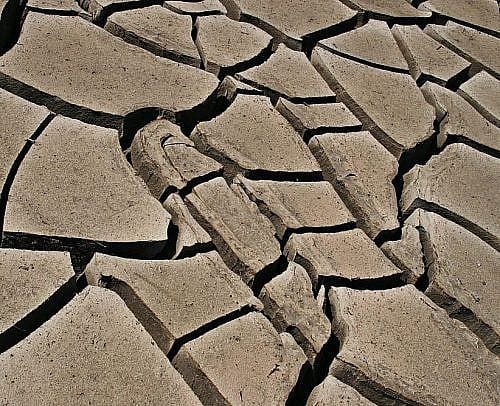
Resilience
Resilience is the ability of the land to recover and is an important concept in land management. Natural attenuation speaks to the extraordinary capacity of the environment to return to a point of stasis over time. Today, scientists understand that the natural systems on Earth do return to a state of balance. However, there is a limit to what ecosystems can handle. As a result, humans must assist with remediation efforts for the preservation of the natural earth. In doing so, the environmental industry will continue to improve on contamination remediation methods, as well as sustainability technologies, in order to afford a more natural environment.
Contamination Remediation Professionals
With so many options available to landowners today, navigating the remediation process can be a daunting task. Fortunately, there is ample assistance readily available through your local environmental professionals.
It is important to remember that each site is unique, and it is necessary to consult with a licensed professional geologist or engineer in order to determine the appropriate course of remedial action.
Authors:
Written By: Michael Joseph Sabo
Edited By: Adam Azad Kaligi, PG
Sources:
US Environmental Protection Agency
https://clu-in.org/products/citguide/
https://archive.epa.gov/ada/web/pdf/insituchemicaloxidation_engineering_issue.pdf
https://semspub.epa.gov/work/HQ/158711.pdf
American Petroleum Institute
https://www.api.org/~/media/Files/EHS/Clean_Water/Bulletins/09_Bull.pdf
United States Geological Service

